Yes, you can do it using PIVOT but not in this shape, you have firstly to generate a row number to use it to format the data in the way you want. Something like this:
WITH Ranked
AS
(
SELECT GroupName, IDnumber,
ROW_NUMBER() OVER(PARTITION BY GroupName ORDER BY GroupName) AS RN
FROM Table1
)
SELECT GroupName,
[1] AS ID1, [2] AS ID2, [3] AS ID3, [4] AS ID4
FROM Ranked AS r
PIVOT
(
MAX(IDnumber)
FOR RN IN([1], [2], [3], [4])
) AS p;
This will give you:
| GROUPNAME | ID1 | ID2 | ID3 | ID4 |
|-----------|------|------|------|--------|
| 1 | 8395 | A660 | 8396 | A661 |
| 2 | 8398 | A662 | 8399 | (null) |
If you want to do it dynamically and not to write the row number by hand in the pivot table operator, you have to do it using dynamic SQL, something like:
DECLARE @cols AS NVARCHAR(MAX);
DECLARE @colnames AS NVARCHAR(MAX);
DECLARE @query AS NVARCHAR(MAX);
SELECT @cols = STUFF((SELECT distinct ',' +
QUOTENAME(RN)
FROM
(
SELECT ROW_NUMBER() OVER(PARTITION BY GroupName ORDER BY GroupName) AS RN
FROM Table1
) AS t
FOR XML PATH(''), TYPE
).value('.', 'NVARCHAR(MAX)')
, 1, 1, '');
SELECT @colnames = STUFF((SELECT distinct ',' +
QUOTENAME(RN) + 'AS' +
QUOTENAME('ID' + CAST(RN AS NVARCHAR(5)))
FROM
(
SELECT ROW_NUMBER() OVER(PARTITION BY GroupName ORDER BY GroupName) AS RN
FROM Table1
) AS t
FOR XML PATH(''), TYPE
).value('.', 'NVARCHAR(MAX)')
, 1, 1, '');
SELECT @query = 'WITH Ranked
AS
(
SELECT GroupName, IDnumber,
ROW_NUMBER() OVER(PARTITION BY GroupName ORDER BY GroupName) AS RN
FROM Table1
)
SELECT GroupName, ' + @colnames +
' FROM Ranked AS r
PIVOT
(
MAX(IDnumber)
FOR RN IN(' + @cols + ')' +
') p';
execute(@query);
This should give you the same result:
| GROUPNAME | ID1 | ID2 | ID3 | ID4 |
|-----------|------|------|------|--------|
| 1 | 8395 | A660 | 8396 | A661 |
| 2 | 8398 | A662 | 8399 | (null) |
